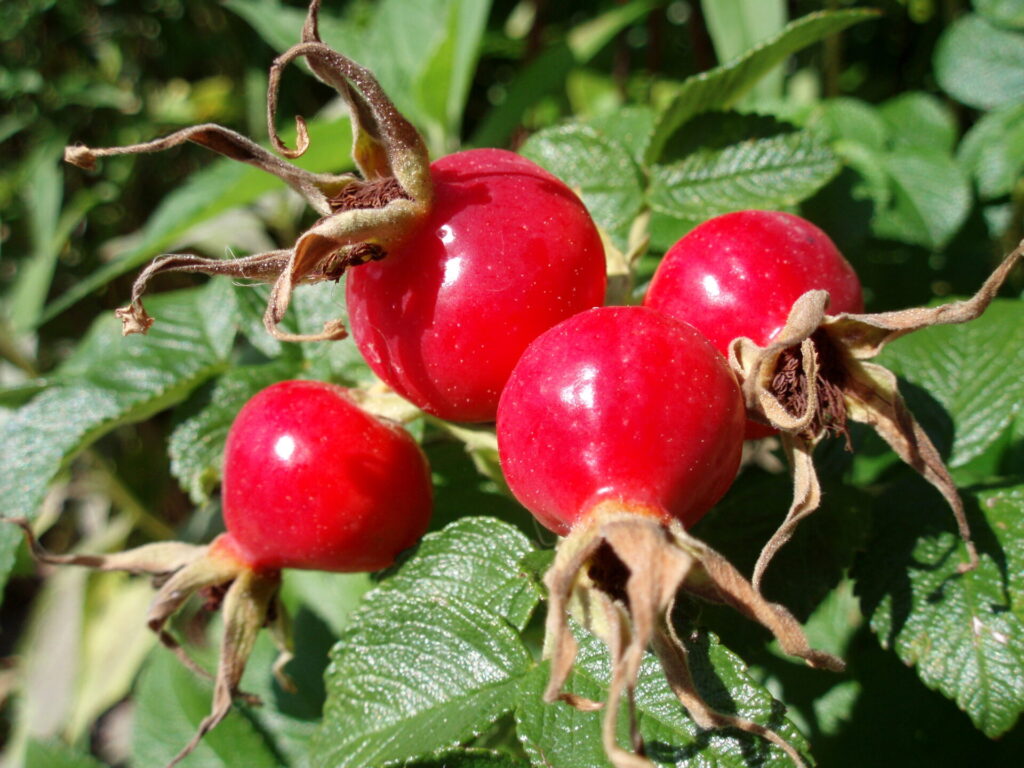Rose hips are the fruit, or seed pods, of rose plants. They are usually red or orange but can be purple or black, and they typically ripen in the late summer or fall. Hips and petals are edible and come from the Rosacea family. These deciduous perennial shrubs vary 4 to 8 ft. tall and 4 to 6 ft. wide. For the best hips, plant a Rugosa variety of rose (native shrub rose species) which are said to have the best-tasting hips. These hips are also generally the largest and most abundant. Rugosa roses are known to spread, and are frequently grown as a decorative hedge. Though Rugosa produces the best hips, other varieties of roses do as well. A basic guideline is that hips won’t form on roses that produce blooms with tightly packed petals, like tea roses. Rugosas come in white, red and many shades of pink. Rose hips have a bit of the tartness of crab apples. You can enjoy the beautiful flowers all summer long before you have to harvest your hips later. They’re a perfect crop for the flower garden and surprise their recipients with good medicinal uses.






